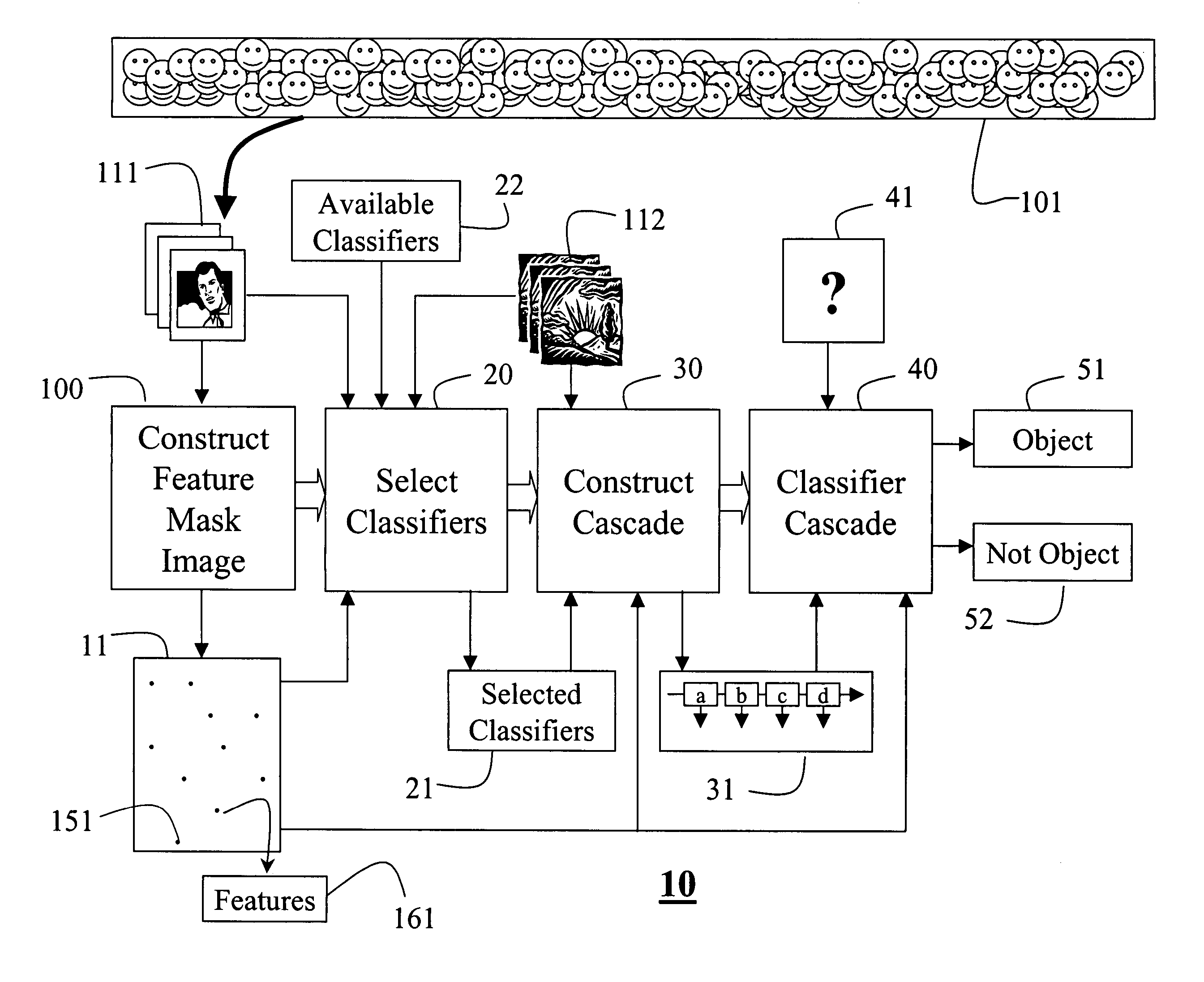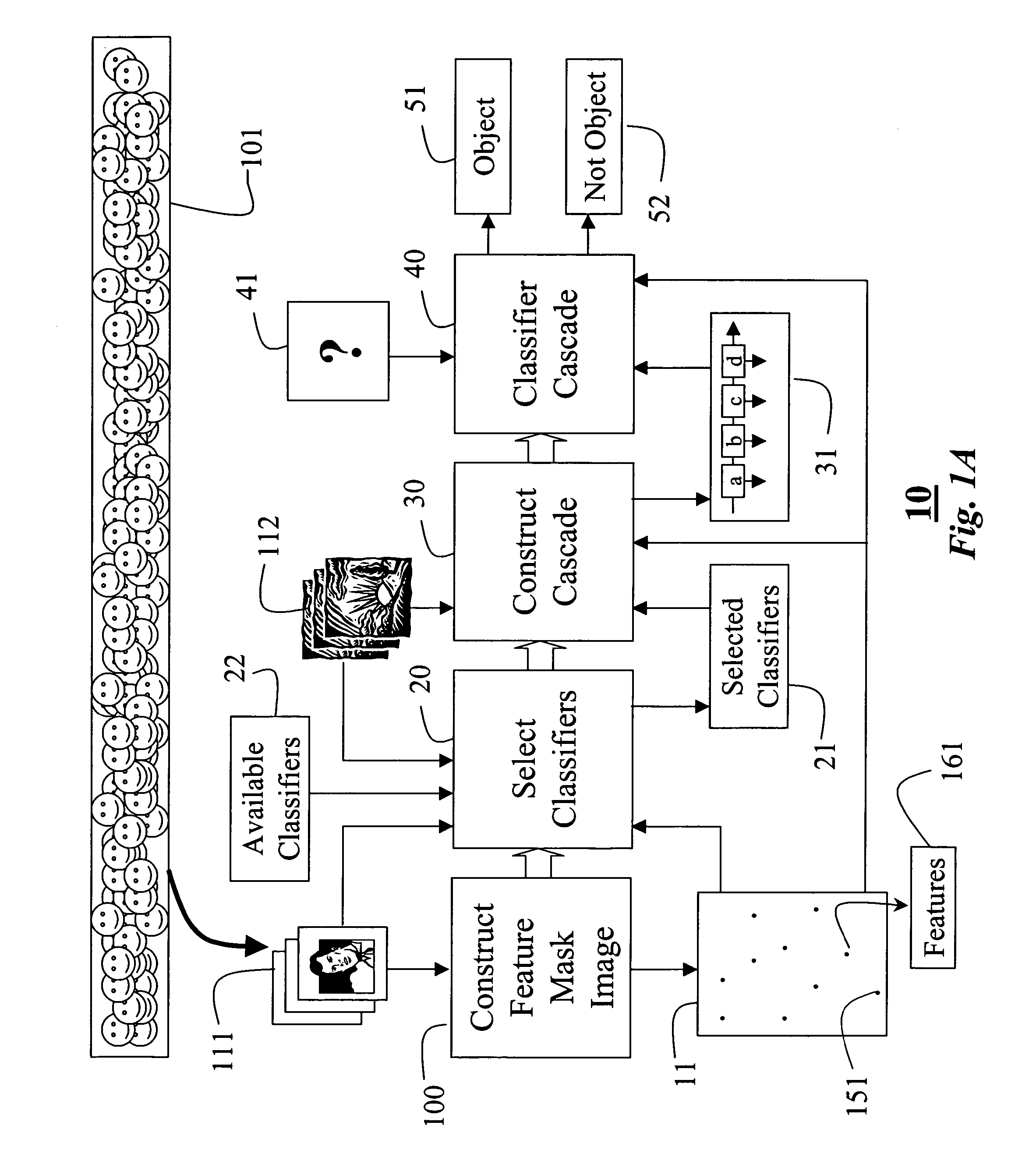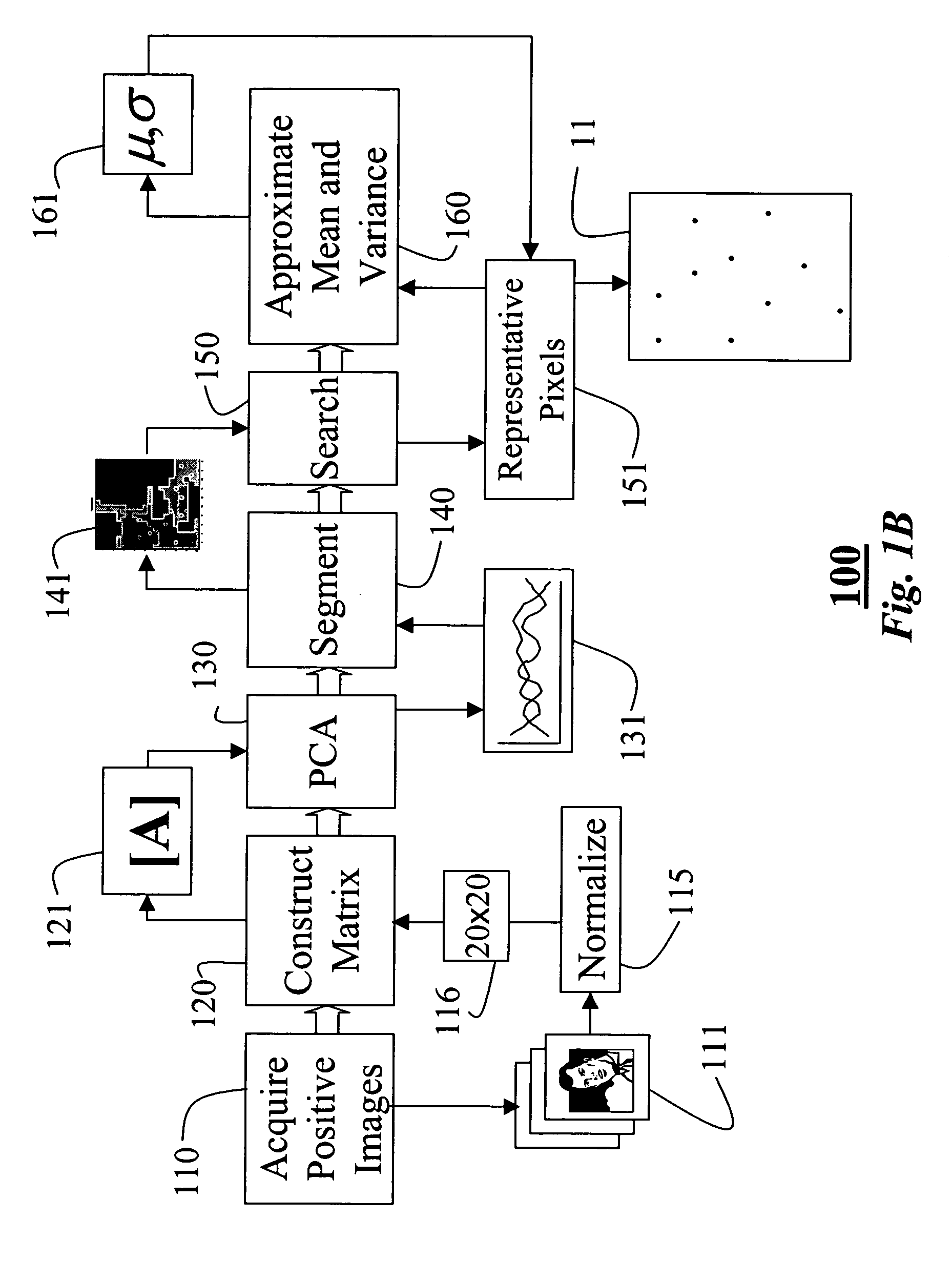Object classification using image segmentation
a technology of image segmentation and object classification, applied in the field of computer vision, can solve the problems of wasting more time on more complex and time-consuming classifiers, placing a heavy computational burden on the feature selection process, etc., and achieves the effect of accelerating machine learning classifiers and classifiers, and excellent pre-processing steps
- Summary
- Abstract
- Description
- Claims
- Application Information
AI Technical Summary
Benefits of technology
Problems solved by technology
Method used
Image
Examples
Embodiment Construction
[0021]FIG. 1A shows a system and method 10 for classifying an object in an image. The method includes the following phases.
[0022] A single feature mask image 11 is constructed 100 from a set of positive training images 111 of a class of objects 101, for example human faces or cars. It is assumed that all images are acquired from approximately the same viewpoint. For example, the images 111 are all frontal views of the faces 101, or rear views, if the objects were cars. As a characteristic, a set of features 161 is associated only with a very small number of representative pixels 151 in the feature mask image 11. For the purpose of object classification, it is the intent that this single feature mask image 11 represents all images that can ever by acquired of the class of objects. For example, the feature mask image can represent the millions and millions of I.D. photographs that exist. This makes the feature mask image 11 an excellent tool for a large number of computer vision appl...
PUM
 Login to View More
Login to View More Abstract
Description
Claims
Application Information
 Login to View More
Login to View More - R&D
- Intellectual Property
- Life Sciences
- Materials
- Tech Scout
- Unparalleled Data Quality
- Higher Quality Content
- 60% Fewer Hallucinations
Browse by: Latest US Patents, China's latest patents, Technical Efficacy Thesaurus, Application Domain, Technology Topic, Popular Technical Reports.
© 2025 PatSnap. All rights reserved.Legal|Privacy policy|Modern Slavery Act Transparency Statement|Sitemap|About US| Contact US: help@patsnap.com



